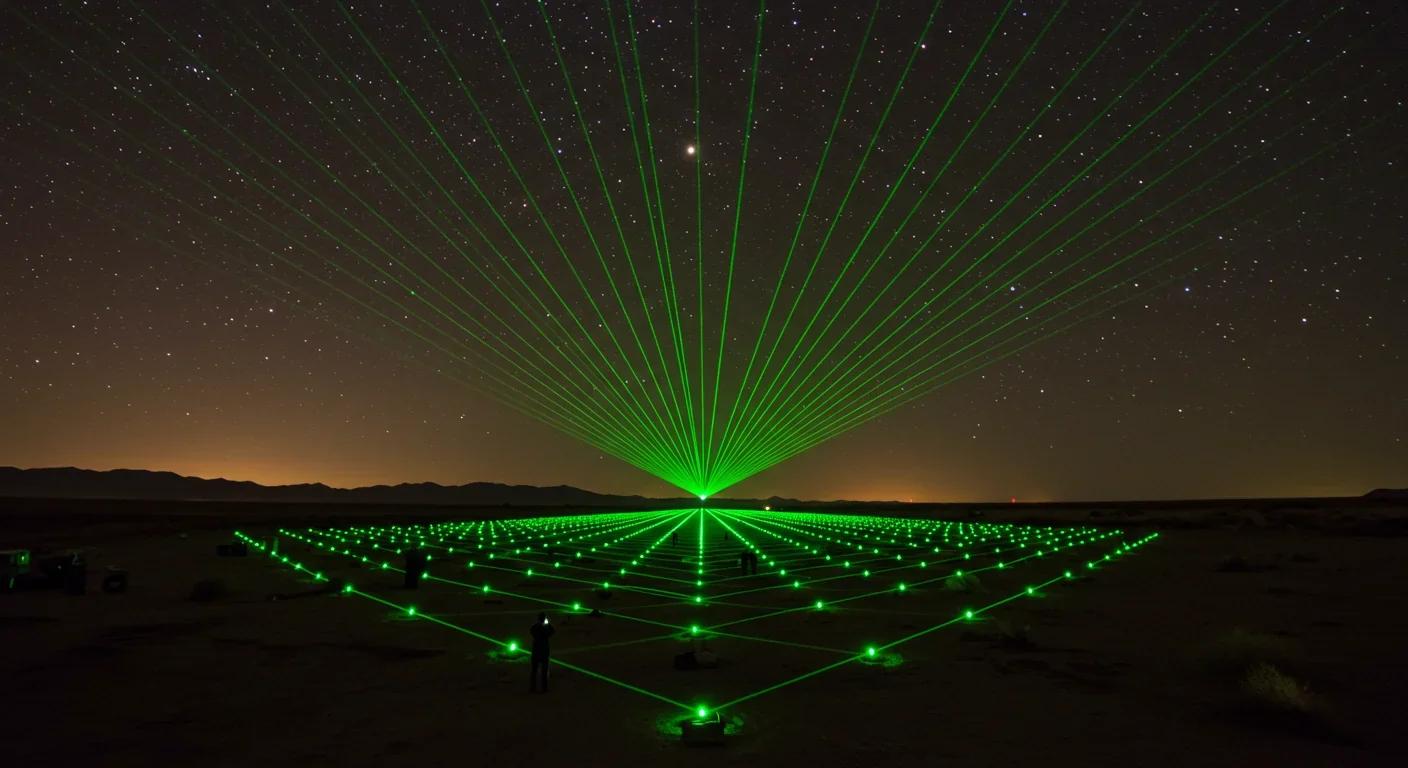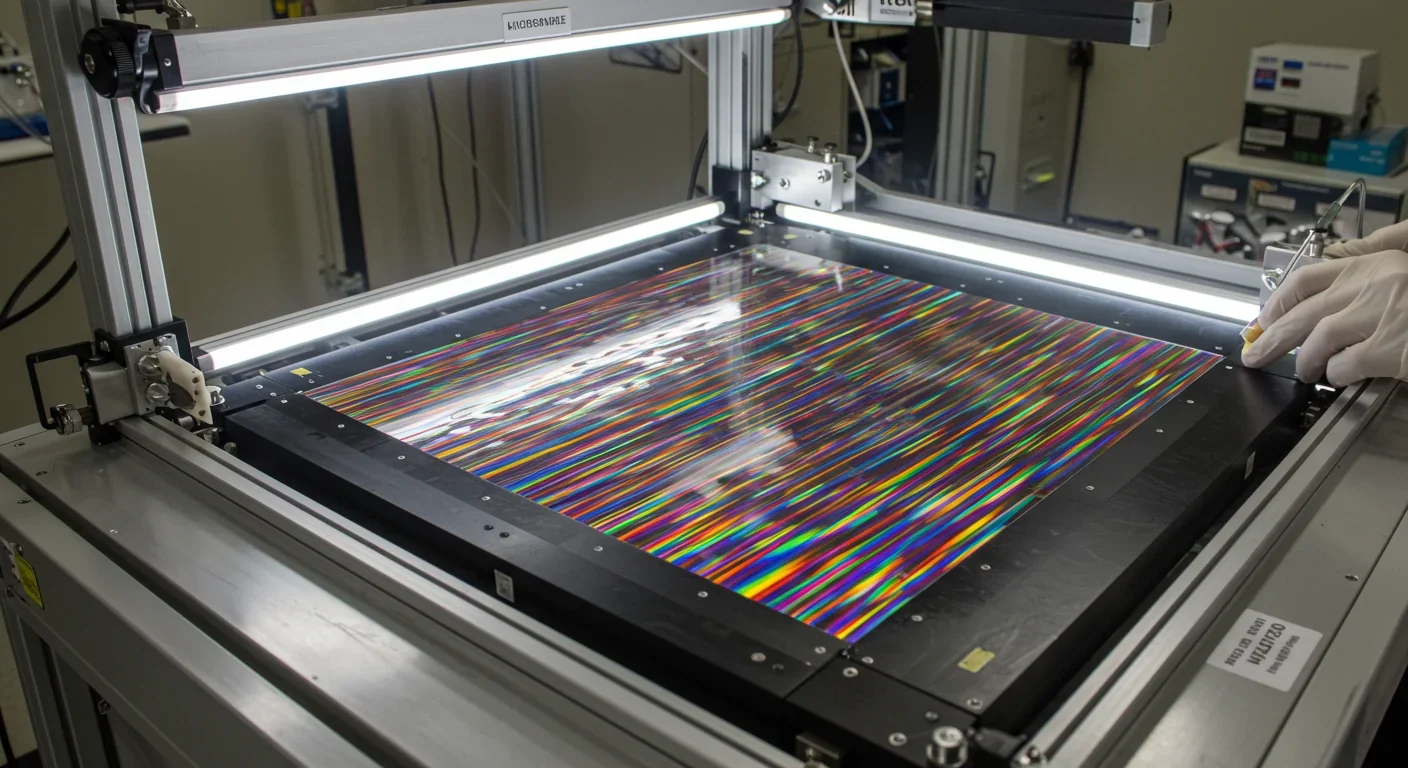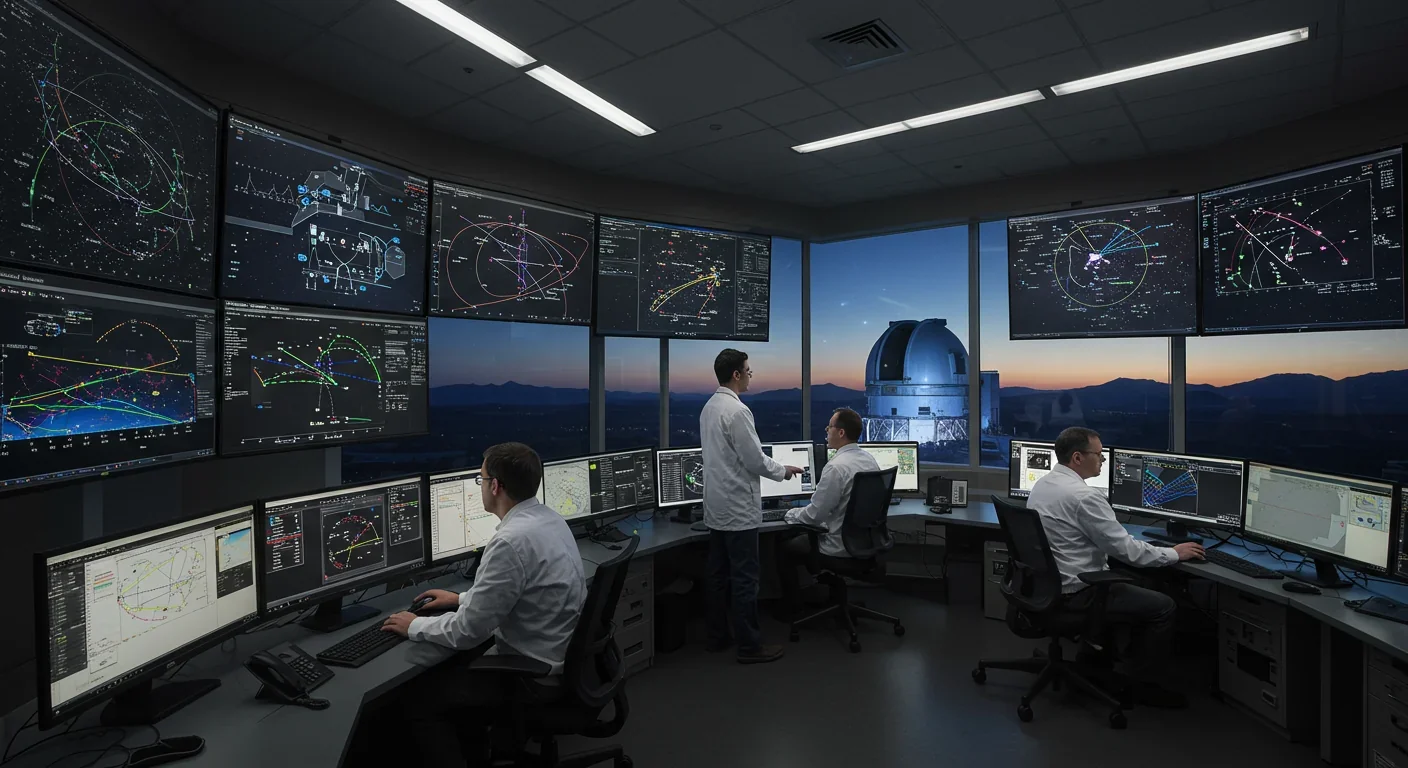Fusion Rockets Could Reach 10% Light Speed: The Breakthrough

TL;DR: Breakthrough Starshot's ambitious plan to reach Alpha Centauri stalled after spending only $4.5 million of a promised $100 million, revealing that interstellar travel requires sustained institutional commitment beyond one billionaire's fortune and faces massive technical hurdles from laser beam control to geopolitical weapons concerns.

In April 2016, Yuri Milner stood before a crowd of scientists and journalists with Stephen Hawking by his side, announcing the audacious goal of sending a probe to Alpha Centauri within a generation. Breakthrough Starshot promised to shrink the tens of thousands of years conventional rockets would need into just 20 years of travel time by pushing gram-scale spacecraft to 20% the speed of light. The vision captured imaginations worldwide: humanity's first messenger to another star system, launched in our lifetimes. But by September 2025, the project was quietly placed on indefinite hold, its $100 million pledge reduced to a trickle of $4.5 million actually spent. What happened between the fanfare and the fade-out reveals as much about the limits of private-sector space ambition as it does about the colossal technical hurdles still standing between us and the stars.
Breakthrough Starshot wasn't just ambitious in scale—it required rewriting the rulebook on how we think about propulsion. Traditional chemical rockets carry their fuel with them, making interstellar journeys impossibly slow and heavy. Starshot's solution was radical: leave the engine on Earth and use light itself as the propellant. The plan called for a ground-based phased array of lasers outputting a combined 100 gigawatts of power—roughly equivalent to the output of four large nuclear power plants—focused into a single coherent beam spanning several kilometers.
This laser torrent would strike a lightsail just four meters square, made of silicon nitride thin enough to be measured in nanometers yet reflective enough to capture nearly every photon. The entire spacecraft—sail, sensors, radio, and computer combined—would weigh about a gram, roughly the heft of a paperclip. For ten minutes, 40,000 times Earth's gravity would press against that sail as the laser beam shoved it faster and faster. Then the light would fade, the probe would coast onward at 60,000 kilometers per second, and 20 years later it would streak through the Alpha Centauri system, transmitting snapshots of any worlds it glimpsed before vanishing into the void.
On paper, the physics checks out. Labs have fabricated silicon nitride films at the required thickness. Arrays of lasers have been phased together to create coherent beams. But between the laboratory bench and a functioning interstellar launcher lies an engineering chasm so vast that even Milner's billions couldn't bridge it quickly.
The biggest elephant in the room isn't the sail or the spacecraft—it's the laser array itself. Building a 100-gigawatt ground-based system means overcoming atmospheric turbulence that would scatter and distort the beam long before it reached the tiny sail accelerating away from Earth. Adaptive optics can correct for atmospheric distortion, but doing so at the speed and precision required means making millions of adjustments per second to keep the beam locked on a target moving at an appreciable fraction of light speed. No existing system comes close to this capability.
Then there's cost. Early estimates pegged the laser array price at around $100 per watt of output capacity. To make Starshot viable, that would need to drop to a few cents per watt—a cost reduction of roughly 99%. While laser technology has gotten cheaper and more efficient, we're talking about a thousand-fold improvement in performance at a tenth of the price, a trajectory that would take decades even with aggressive R&D funding.
Communication poses another nearly insurmountable challenge. Once the probe reaches Alpha Centauri, it needs to phone home across 4.37 light-years. The proposed laser communicator would achieve data rates measured in just a few baud per watt—meaning that even a perfect transmission might take years to send back a single high-resolution image. And perfect transmissions don't exist; space is full of dust, and at 20% light speed, even micron-sized particles hit with the energy of small explosions.
That's why Starshot's plan called for launching a swarm of around 1,000 identical probes, accepting that dust collisions would destroy many en route. Redundancy is the only insurance policy when you're crossing interstellar distances at relativistic speeds. But launching a thousand spacecraft isn't a thousand times the cost of launching one—it also means building, testing, and phasing a laser array capable of reliable repeated firings over years.

When Milner announced Breakthrough Starshot, he pledged $100 million to kickstart the project. Media outlets around the world ran with the headline figure, framing it as serious money behind a serious endeavor. But behind the scenes, the financial reality was starkly different. According to project engineers and financial disclosures, Breakthrough Initiatives spent only about $4.5 million on roughly 30 contracts for laser array development and sail fabrication. The promised flood of funding never materialized.
This gap between public commitment and private expenditure isn't just about broken promises—it's symptomatic of a deeper issue with billionaire-led science projects. Private patrons can ignite public interest and seed initial research, but sustaining a multi-decade, multi-billion-dollar program requires institutional commitment that one individual's checkbook can't provide. When Milner's personal interest waned or priorities shifted, the project stalled. There was no NASA-style bureaucracy to keep the wheels turning, no congressional appropriations to guarantee year-over-year funding.
Research teams that had been hired for Starshot work found themselves quietly transitioning their focus to other projects as the money dried up. By late 2024, it was clear internally that the program was effectively dormant, even if no public announcement came until much later. Pete Worden, the former NASA Ames director who led Breakthrough Starshot, eventually emailed that the program was "on hold and working to transition portions to others"—the diplomatic phrasing of a project in indefinite limbo.
The irony is that $100 million wouldn't have been enough anyway. Conservative estimates for actually building and launching the Starshot system range from $5 to $10 billion, and those estimates assume best-case scenarios for laser cost reductions and sail production. The initial pledge was never meant to build the full system—it was supposed to prove feasibility and attract government and international partners. But those partners remained skeptical.
Even as the technical program sputtered, Breakthrough Starshot accomplished something subtler and perhaps more valuable: it changed the conversation about interstellar travel from pure fantasy to engineering challenge. Before Starshot, discussions of sending probes to other stars belonged in the realm of science fiction or distant-future speculation. After the 2016 announcement, universities began hosting symposia on lightsail design, journals published papers on beam coherence and sail materials, and students started pursuing PhDs in areas directly relevant to interstellar propulsion.
This is the psychological catalysis that high-profile projects can achieve: they make the improbable seem achievable, drawing talent and attention to problems that might otherwise languish. Even if Breakthrough Starshot never launches a single probe, it created a research community and a body of knowledge that didn't exist before. Hundreds of researchers now understand the nuances of laser phasing, nanoscale sail fabrication, and gram-scale spacecraft design in ways that would have taken another generation to develop organically.
Public engagement matters too. Millions of people who had never thought about interstellar travel suddenly found themselves contemplating humanity's expansion beyond the solar system. Schools incorporated Starshot into science curricula. Documentaries featured the project. The dream spread, even if the hardware didn't.
But there's a flip side to this catalytic effect. When projects like Starshot fail to deliver, they can breed cynicism and skepticism about ambitious space goals. If a billionaire with unlimited resources couldn't make it happen, critics ask, why should taxpayers fund anything similar? The gap between the press conference promises and the muted reality risks inoculating the public against future bold proposals, making it harder for genuine breakthrough efforts to gain traction.
Breakthrough Starshot always faced a problem that had nothing to do with physics or funding: the laser array at its heart is, functionally, a weapon. A ground-based system capable of focusing 100 gigawatts onto a target the size of a car, even one moving away from Earth at high speed, could in principle be retargeted at satellites, aircraft, or ground installations. Yuri Milner himself acknowledged this openly, stating that the laser is essentially a weapon and that "the only solutions for that problem are international cooperation and trust."
Trust, however, is in short supply when it comes to directed-energy weapons. Arms control treaties haven't kept pace with laser technology, and the prospect of a private entity or single nation building a multi-gigawatt ground-based array raises red flags across diplomatic and military circles. How do you verify that such a system is only being used for peaceful scientific purposes? How do you prevent dual-use technologies from proliferating to hostile actors?
These aren't abstract concerns. China, the United States, Russia, and European nations are all developing directed-energy weapons for missile defense and anti-satellite applications. A Starshot-class laser, even if built with the noblest intentions, would immediately become a strategic asset and a potential flashpoint for international tensions. NASA and ESA, both of which were courted as partners for Starshot, remained cautious precisely because of these geopolitical entanglements.
One potential path forward involves international collaboration from the ground up—building the laser array as a joint project under international oversight, similar to CERN or the International Space Station. But that requires a level of diplomatic effort and multilateral commitment that far exceeds what a private initiative can muster. Without government leadership, the weapons-control problem remains a dealbreaker.

Breakthrough Starshot's stall doesn't mean interstellar travel is dead—it just means the lightsail approach faces steeper challenges than initially hoped. Researchers continue to explore alternative propulsion concepts, each with its own set of trade-offs.
Nuclear pulse propulsion, the concept behind Project Orion in the 1960s, involves detonating small nuclear explosives behind a spacecraft to generate thrust. It's brutal, effective, and could theoretically accelerate much heavier payloads than lightsails. But it requires launching nuclear weapons into space and detonating them repeatedly—an approach banned under current international treaties and fraught with political, environmental, and safety concerns.
Antimatter engines offer tantalizing theoretical efficiency: matter-antimatter annihilation releases energy with 100% conversion efficiency, dwarfing nuclear fission or fusion. But producing even milligrams of antimatter is staggeringly expensive and energy-intensive, and storing it without it annihilating prematurely presents unsolved engineering challenges. We're decades, if not centuries, away from antimatter propulsion being practical.
Then there are the truly speculative concepts: warp drives that bend spacetime to sidestep the light-speed limit, or generation ships that carry entire ecosystems and populations across the galaxy over millennia. These remain firmly in the theoretical realm, more the domain of physics papers than engineering blueprints.
A more pragmatic near-term option might be missions to intercept interstellar objects as they pass through our solar system. Astronomers estimate that around 60 interstellar visitors are within Jupiter's orbit at any given time, and next-generation telescopes like the Vera Rubin Observatory could spot up to 70 new ones per year. Sending a probe to rendezvous with one of these objects wouldn't require relativistic speeds—just good timing and a fast spacecraft. The European Space Agency is already planning a comet intercept mission in 2029, and the architecture developed for that mission could be adapted to chase down an interstellar visitor.
Such missions wouldn't reach Alpha Centauri, but they would give humanity its first up-close look at material from another stellar system—a scientifically invaluable achievement that's actually feasible within current budgets and technology.
So where does this leave humanity's dream of reaching the stars? Breakthrough Starshot's indefinite hold doesn't close the door, but it does underscore the scale of the challenge. Interstellar travel isn't a problem that a single billionaire, or even a coalition of billionaires, can solve alone. It requires sustained institutional commitment over decades, international collaboration, major technological breakthroughs in multiple fields, and a level of patience that conflicts with the rapid-results culture of Silicon Valley-style innovation.
The technologies Starshot sought to develop—ultra-lightweight spacecraft, advanced laser systems, nanoscale materials—will find applications closer to home. High-power lasers could enable faster communication with Mars missions or revolutionize Earth-orbit satellite propulsion. Gram-scale sensors could transform Earth observation and scientific instrumentation. Even if the interstellar goal remains elusive, the engineering spinoffs have value.
Public space agencies are taking note. NASA's renewed interest in lightsail concepts, ESA's comet intercept planning, and DARPA's quiet work on advanced propulsion all build on the foundation that Starshot helped lay. Government programs move slowly, but they also move steadily when the science is compelling. The question isn't whether humanity will ever send a probe to another star—it's whether we'll do it in 50 years, 100 years, or longer.
For now, the stars remain tantalizingly out of reach. Breakthrough Starshot aimed to shrink that distance, and while the specific project may have stumbled, the broader goal endures. The next attempt might come from NASA, from China's space program, from a consortium of European agencies, or from an international collaboration that doesn't yet exist. What's clear is that the path to the stars won't be a sprint funded by one person's fortune—it will be a marathon requiring the collective effort of nations and generations.
The dream of interstellar travel has always been humanity's most ambitious long-term project. Starshot reminded us of both the allure and the enormity of that dream. Whether we reach Alpha Centauri in 20 years, 200 years, or never, the effort to try reveals something essential about what it means to be human: the refusal to accept the horizon as the limit.

Recent breakthroughs in fusion technology—including 351,000-gauss magnetic fields, AI-driven plasma diagnostics, and net energy gain at the National Ignition Facility—are transforming fusion propulsion from science fiction to engineering frontier. Scientists now have a realistic pathway to accelerate spacecraft to 10% of light speed, enabling a 43-year journey to Alpha Centauri. While challenges remain in miniaturization, neutron management, and sustained operation, the physics barriers have ...

Epigenetic clocks measure DNA methylation patterns to calculate biological age, which predicts disease risk up to 30 years before symptoms appear. Landmark studies show that accelerated epigenetic aging forecasts cardiovascular disease, diabetes, and neurodegeneration with remarkable accuracy. Lifestyle interventions—Mediterranean diet, structured exercise, quality sleep, stress management—can measurably reverse biological aging, reducing epigenetic age by 1-2 years within months. Commercial ...

Data centers consumed 415 terawatt-hours of electricity in 2024 and will nearly double that by 2030, driven by AI's insatiable energy appetite. Despite tech giants' renewable pledges, actual emissions are up to 662% higher than reported due to accounting loopholes. A digital pollution tax—similar to Europe's carbon border tariff—could finally force the industry to invest in efficiency technologies like liquid cooling, waste heat recovery, and time-matched renewable power, transforming volunta...

Humans are hardwired to see invisible agents—gods, ghosts, conspiracies—thanks to the Hyperactive Agency Detection Device (HADD), an evolutionary survival mechanism that favored false alarms over fatal misses. This cognitive bias, rooted in brain regions like the temporoparietal junction and medial prefrontal cortex, generates religious beliefs, animistic worldviews, and conspiracy theories across all cultures. Understanding HADD doesn't eliminate belief, but it helps us recognize when our pa...

The bombardier beetle has perfected a chemical defense system that human engineers are still trying to replicate: a two-chamber micro-combustion engine that mixes hydroquinone and hydrogen peroxide to create explosive 100°C sprays at up to 500 pulses per second, aimed with 270-degree precision. This tiny insect's biochemical marvel is inspiring revolutionary technologies in aerospace propulsion, pharmaceutical delivery, and fire suppression. By 2030, beetle-inspired systems could position sat...

The U.S. faces a catastrophic care worker shortage driven by poverty-level wages, overwhelming burnout, and systemic undervaluation. With 99% of nursing homes hiring and 9.7 million openings projected by 2034, the crisis threatens patient safety, family stability, and economic productivity. Evidence-based solutions—wage reforms, streamlined training, technology integration, and policy enforcement—exist and work, but require sustained political will and cultural recognition that caregiving is ...

Every major AI model was trained on copyrighted text scraped without permission, triggering billion-dollar lawsuits and forcing a reckoning between innovation and creator rights. The future depends on finding balance between transformative AI development and fair compensation for the people whose work fuels it.